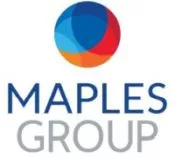- within Finance and Banking topic(s)
- in South America
- in South America
- in South America
- within Media, Telecoms, IT, Entertainment, Accounting and Audit and Privacy topic(s)
- with readers working within the Chemicals industries
As Asia continues to attract both regional and international investors, understanding the prevailing trends and distinguishing features of Asia-focused funds, especially in comparison to their non-Asia counterparts, has become essential for fund managers, investors and service providers. In this article, we share our observations on the 2024 launches of Asia-focused open-ended funds for which the Maples Group assisted, including both funds with Asia-based managers and investors (together, "Asia-focused funds"). The Maples Group advises on 33% of all Cayman Islands open-ended funds1 and so are perfectly positioned to provide unique insight into funds trends throughout the industry.
Investment Strategies and Objectives
Equity long/short strategies continue to dominate the Asia-focused hedge fund space, with fund of funds strategies also retaining popularity. There was also a noticeable increase in the launch of multi-strategy funds in 2024, a trend expected to persist into 2025 and beyond. This diversification reflects both the evolving risk appetite of investors and the increasing sophistication of fund managers in the region.
Fund Vehicles and Structural Preferences
As has been the case for many years, Asia-focused hedge funds launching in 2024 predominantly utilised the exempted company structure, accounting for approximately 66% of open-ended fund vehicles during this period. Both exempted limited partnerships (8%) and segregated portfolio companies (3.5%) were less prevalent in the same period but notably, unit trust made up 21% of new launches. The unit trust structure is typically used for investment by Japanese investors and so it is no surprise, given the buoyant Japanese market, that this vehicle made up a relatively large proportion of the 2024 launches in Asia.
In terms of fund structure, the double-legged master-feeder arrangement was the most prevalent making up 36% of the launches, closely followed by single-legged master-feeder structures and standalone investment funds. The single legged master-feeder structure is used more often for Asia-focused funds than other jurisdictions due to uncertainty around US investor appetite for investing in Asia. Managers may prefer to launch with only an offshore feeder first to gain a track record with non-US investors, prior to establishing the onshore feeder vehicle once US interest is more certain. As the figures show, Asia has seen an uptick in interest from US investors in recent times and the trend appears to be continuing into 2025.
Fee Arrangements
A substantial majority of Asia-focused funds launched with both management and performance fee arrangements. Management fees were generally set at 1% or 1.5%. The historical 2% also appeared (although less frequently) and only one fund was launched with a management fee above this amount. A performance fee of 20% remained the most prevalent though rates of 10% and 15% were not uncommon. Interestingly, there were also various instances of 'above 20%' which were likely incorporated in the fee arrangements to offset lower management fees. Over 80% of funds that had a performance fee applied a high-water mark, ensuring that managers are only rewarded for net new gains.
Performance fee payments were typically made under a contractual arrangement, though some funds continue to allocate payments as dividend on performance fee shares. The choice between these payment methods often depends on the bespoke tax considerations of the manager and the fund.
Funding Mechanisms and Expense Arrangements
Similar to the global trend, the vast majority of Asia-focused funds are fully funded at launch, though we do see more open-ended launches now with capital commitment mechanisms. This shift allows for greater flexibility in capital deployment and demonstrates a diversification of investment type for open-ended fund structures which was not necessarily an option in the past.
Pass-through expenses are not typically a feature of Asia-focused funds. In 2024, only a single Asia-focused fund was launched with such an arrangement, underscoring the region's preference for simplicity and cost predictability from the investor's perspective.
Side Pockets and Illiquid Investments
As with recent years, a significant proportion of Asia-focused funds (68%) incorporated side-pocket arrangements in 2024, allowing for the segregation of illiquid or hard-to-value assets. More than half of these funds permitted fund-mandated side pockets, reflecting a growing emphasis on liquidity protection in volatile or uncertain markets. Interestingly, explicit caps on the amount allocated to side pockets were rare, suggesting a degree of flexibility from investors in managing illiquidity risk.
Redemption Terms
Asia-focused funds tended to offer standardised redemption options, with quarterly redemptions being the most common, followed by monthly. Longer redemption periods, such as annual or semi-annual, were unusual. Notice periods of one month (30 days) were standard, though periods of up to three months were also available in some funds.
Lock-up periods were a common feature, with around 40% of funds imposing a one-year lock-up. Although hard and soft lock-ups periods were both used, soft lock-ups were the most prevalent. Redemption gates were almost universal, typically based on the value of the fund or master fund, with the most frequent limit set at 25% of net asset value, though the amount ranged from 5% to 50%.
Governance and Voting Rights
The majority of Asia-focused funds appointed independent directors at the board or general partner level, reflecting a commitment to maintain robust governance standards. This reflects what we are seeing in the market globally and makes sense given the worldwide standards now applied to corporate governance and internal controls, including the formalisation such requirements in the Cayman Islands at the end of 2023.
Independent anti-money laundering ("AML") officers were also standard practice which should be no surprise given the personal liability attached to certain aspects of these positions and the expectation from regulators as to the knowledge and expertise associated with each of the three officer roles.
As has been standard in the Asia-focused market for many years, voting rights were typically structured such that non-participating management or founder shares held by the investment manager or its affiliate had exclusive voting power, while participating shares held by investors were limited to voting on certain changes affecting only their own rights.
Key Differences: Asia-Focused vs. Non-Asia-focused Funds
- Jurisdictional and Structural Diversity
While exempted companies are dominant in both Asia and non-Asia-focused funds, there is a higher proportion of standalone company structures outside of Asia. However, there are proportionately more Asia-focus funds structured as single-legged master feeder structures which makes sense given the reasons discussed above relating to US investor appetite in the Asia market. - Redemption and Liquidity Options
Non-Asia-focus funds offered a broader range of redemption options in 2024, including more frequent annual and bespoke arrangements. In contrast, Asia-focused funds were more standardised around monthly and quarterly redemptions, reflecting a preference for predictability and operational simplicity. - Fee and Expense Disclosure
Non-Asia-focused funds display a wider range of performance fee rates and are less likely to use or disclose high-water marks. Expense caps in non-Asia-focused funds are more prevalent and often bespoke, whereas Asia-focused funds tend to avoid pass-through expenses and maintain more uniform fee structures.
Looking Forward
Looking ahead, we anticipate that Asia-focused hedge funds will continue to evolve along the trajectories observed in 2024, but with several notable accelerations, including:
(a) The anticipated steady inflow of North American capital is likely to convert many of today's single-legged master-feeder platforms into full double-legged structures, while also perhaps encouraging a greater use of hybrid commitment / capital-call mechanics so that managers can allocate opportunistically across both liquid and private credit positions.
(b) The marked rise in multi-strategy launches is expected to deepen, with managers layering quantitative, private credit and event-driven sleeves onto the traditional equity long / short core in order to dampen volatility and capture idiosyncratic regional dislocations.
(c) Persistent fee pressure with management fees projected to drift toward the 1.00-1.25% band, offset by wider adoption of performance fees above 20% (often paired with tiered hurdles and universal high-water marks) as managers seek to align economics with increasingly sophisticated allocators. Liquidity terms will likely remain anchored around monthly and quarterly redemptions, but we foresee a gradual lengthening of soft lock-ups and more frequent deployment of fund-mandated side pockets to accommodate growing exposure to pre-IPO and other hard-to-value assets.
(d) Regulatory scrutiny across the region may result in near-ubiquitous appointment of independent directors and AML officers and a continued aversion to pass-through expenses.
Collectively, these forces point to a market that is becoming larger, more institutionally oriented and structurally flexible, while still retaining the operational simplicity and investor-friendly features that have long distinguished Asia-focused funds.
Conclusion
The Asia-focused hedge fund market continues to evolve, shaped by regional preferences, regulatory developments, and the influence of global service providers. While there are many similarities with non-Asia-focused funds—particularly in terms of legal structures and governance— differences remain in areas such as redemption terms and fee arrangements. As the market matures, both fund managers and investors will need to remain attuned to these trends to capitalise on opportunities and navigate the complexities of the Asia-Pacific investment landscape. With our array of fund services, the Maples Group is here to help clients and new businesses work through these complexities. Our extensive experience allows us to provide bespoke and value-add advice to clients, ensuring they get the best possible service at the highest standard.
Footnote
1 https://maples.com/knowledge/cayman-islands-trends-insights-open-ended-funds-report-2025
The content of this article is intended to provide a general guide to the subject matter. Specialist advice should be sought about your specific circumstances.


